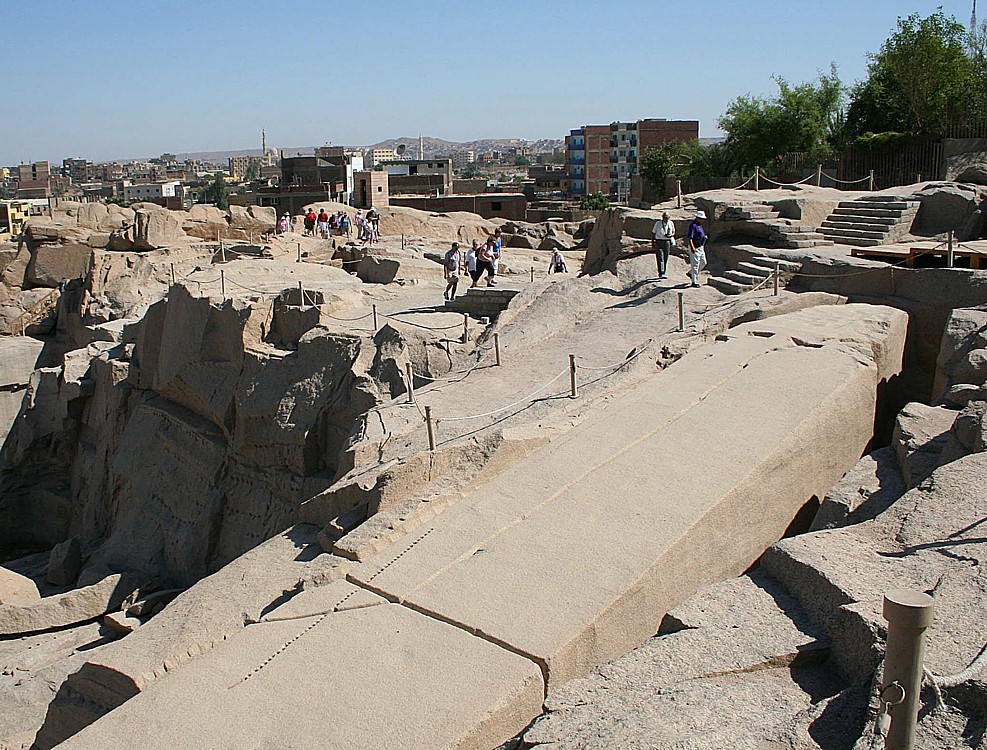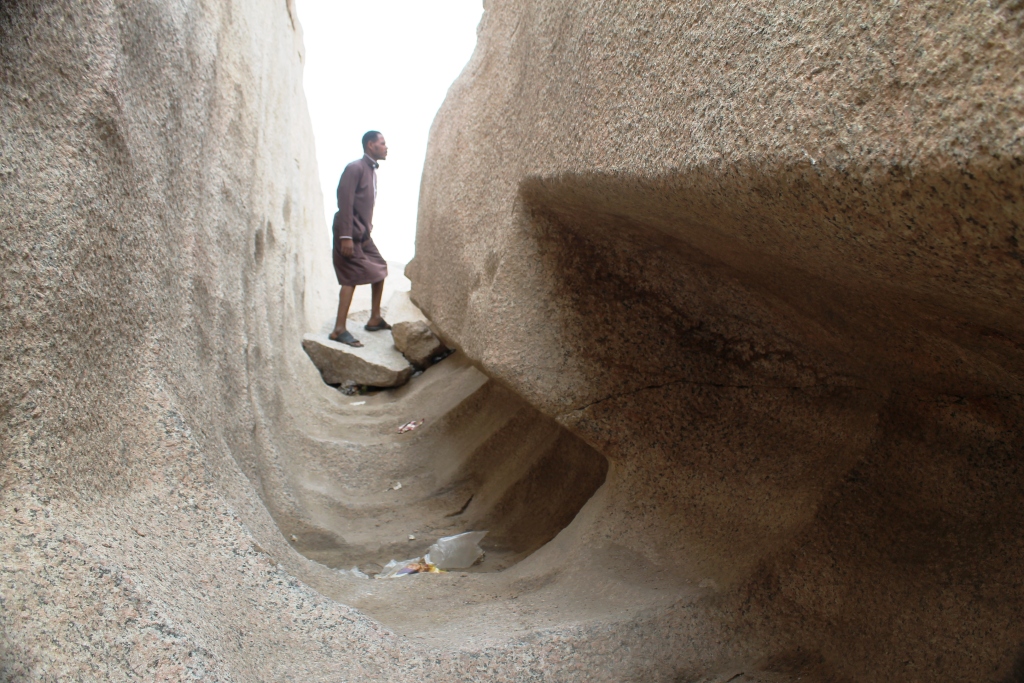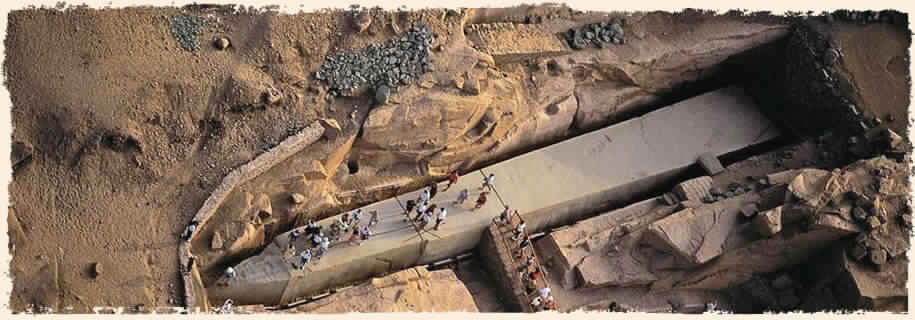Egypt Unfinished Obelisk
Egypt Unfinished Obelisk The southern end of Aswan town was an area of ancient granite quarries, where the most valuable stone for the building of many of Egypt’s monuments was obtained.
Visitors on tours are often taken to see the ‘unfinished obelisk’ which still remains in situ attached to the rock on one side.
Situated in the northern part of the quarries, this gigantic single piece of granite was intended to be an obelisk and is generally attributed to Queen Hatshepsut, being very similar to her obelisk in Karnak Temple in Luxor.
Some fine reliefs depicting the transportation methods of an obelisk can be seen in Hatshepsut’s Deir el-Bahri temple.

In ancient times obelisks and other large stone objects were usually blocked out roughly before they left the quarry.
There are several techniques suggested for the splitting of hard stone away from its surrounding rock.
One method may have been to cut a groove along the line where the stone was to be detached and then to drive in wooden wedges which were soaked with water.
The force of the swelling wood would act to split the granite – there is certainly evidence that this method was used in Roman times.
Another method may have been to cut a groove with stone tools, or a primitive saw used with an abrasive, which would then be heated with charcoal and rapidly cooled with water, causing the stone to split.

Given the primitive soft-metal tools of the ancient Egyptians, the obelisk in the Northern Quarry shows us an amazing feat of technology and archaeologists have learned much about the techniques of stone-cutting from examining this abandoned monument and from the tools which have been left behind.
It would appear that the stone, which measures 42m in length and would have weighed around 1216 tonnes, developed a flaw during quarrying and was never completed, left to lie still attached to the rock for the next 3000 years.
It has been a tourist attraction for almost as long.
The Northern Quarry
is an fascinating place to visit for those interested in early technologies.
It is famous for producing the granite used in the construction of the burial chamber of the Great Pyramid of Khufu as well as some of the casing stones in other pyramids.
Every rock face shows the imprint of ancient stone workers with many cut-marks or artists sketches still to see.
You can almost believe that the workmen have only just put down their tools and gone home for the night.
The area of the northern quarry has been recently excavated and renovated by the SCA, its mounds of rubble cleared to reveal many previously unknown granite objects, including fragments of columns and statues.

Archaeologists have been able to get a clearer picture of how the stone was cut, carved and transported and have found several ancient tools and artists’ sketches.
To the south of the unfinish dedicated to Amun-Re.
They also uncovered, close to the unfinished obelisk, the depressions made from the hewing of seven large obelisks, possibly those in Karnak and Luxor temples.
Another important discovery was a harbour from where the stone was shipped northwards along the Nile, its walls revealing decorativanks around Elephantine.
There are boulder inscriptions on the river bank below the public gardens behind the Old Cataract Hotel.
Another important inscription nearby, depicting Akhenaten’s sculptors Men and Bek, is carved on a rock near the Coptic Cathedral but recently has been inaccessible as it was enclosed within a building site.


